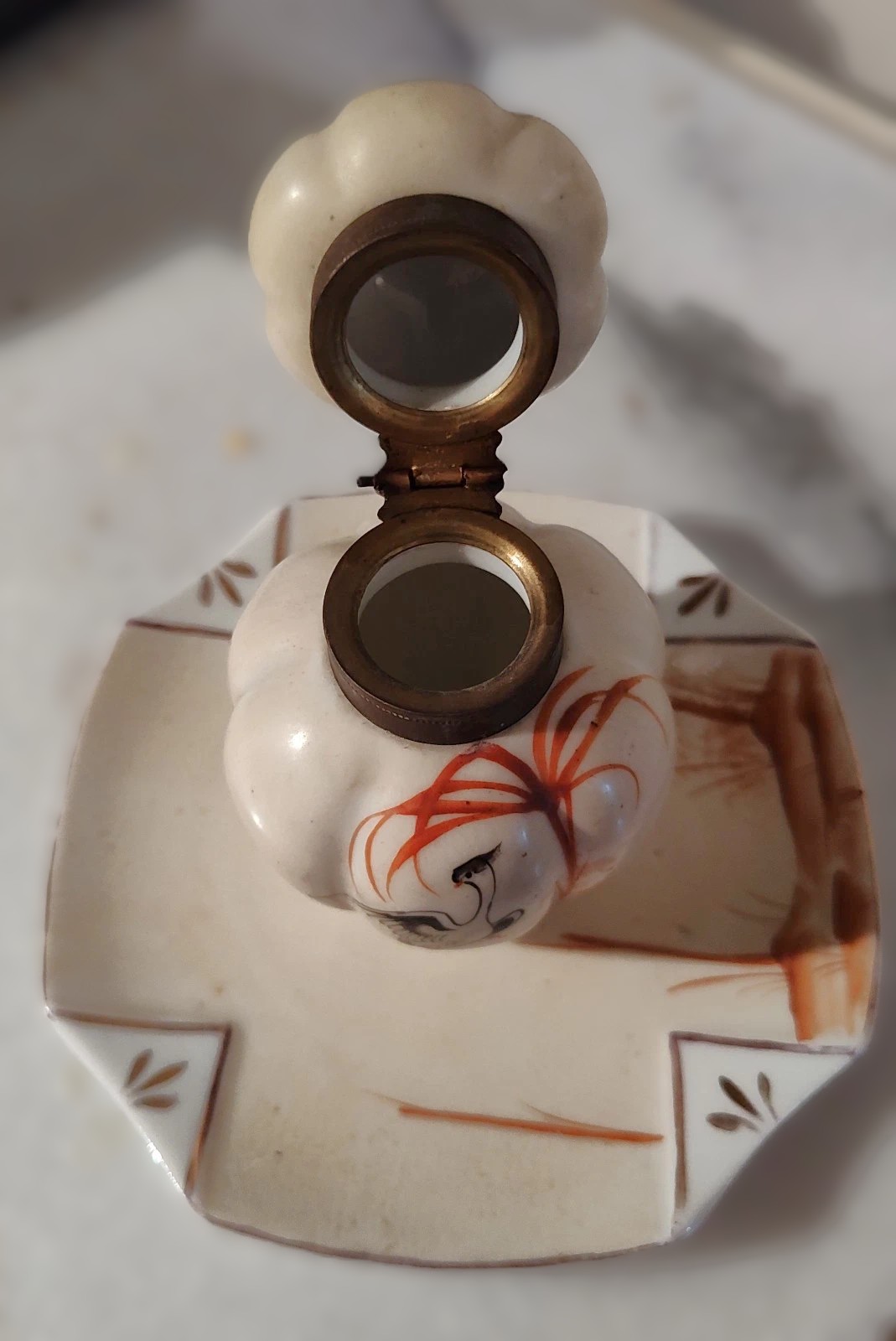
Hand Painted Inkwell with a Crane
| Categories | Far East / Oriental |
| Material | Porcelain |
| Markings | Unmarked |
| Manufacturer | Undetermined |
| Origin | Undetermined |
| Date or Era | circa 1900 |
| Measuring | 5 ¼” x 5 ¼” x 4 ¼” high |
This porcelain inkwell and saucer are a single, integrated piece. The body of the inkwell is bulbous with a fluted or gourd-like shape. It rests on a square saucer with clipped corners, which serves as a base. The inkwell has a hinged, dome-shaped lid, with the hinge and rim made of brass. The entire piece has a hand-painted scene on it. On one side of the inkwell, a crane or heron is depicted standing among tall grasses and a palm. The same artistic style, with the brown and orange linear strokes, is also on the saucer.
Artistic Style and Origin
The aesthetic of this piece is strongly influenced by Japanese art. Here’s a breakdown of the key elements that point to this:
- Subject Matter: The crane (or heron) is a very common and significant motif in Japanese art and culture, symbolizing long life, good fortune, and happiness.
- Artistic Style: The use of clean, hand-painted lines and a somewhat stylized, minimalist depiction of nature, including the simple representation of grasses and a palm-like tree, is characteristic of many Japanese artistic traditions, such as those found in woodblock prints and porcelain decoration.
- Influence: This piece reflects the late 19th-century, and early 20th-century movement known as Japonism, which was a widespread fascination with and imitation of Japanese art and design in the West.
Sold for $31 in August 2025
Content disclaimer. The information posted is the owner’s best knowledge and may not have been vetted by the SOIC. We welcome comments, corrections, and additions, working to make our website information comprehensive and accurate.
Join the Society of Inkwell Collectors (SOIC) – it’s free!
Founded in 1981 as a non-profit organization,
we are documenting inkwells (and accessories).
We’re here to help and inform!




